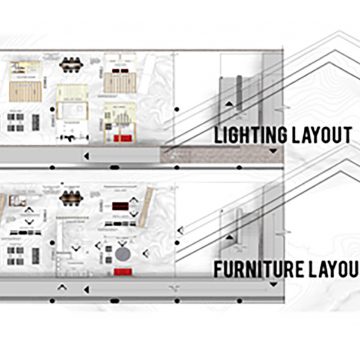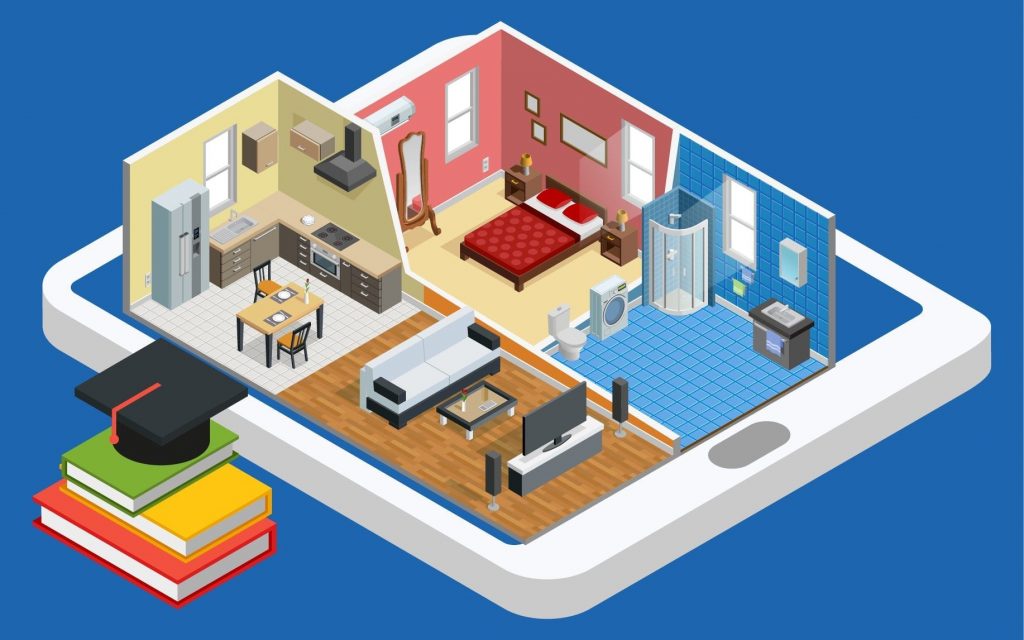Hire a Luxury Residential Architect to Create a Stunning Property
Hire a Luxury Residential Architect to Create a Stunning Property
Blog Article
The Art of Equilibrium: Just How Interior Design and Home Architect Collaborate for Stunning Outcomes
In the world of home layout, striking an equilibrium in between visual appeals and functionality is no little task. This delicate balance is attained with the harmonious collaboration in between indoor designers and designers, each bringing their special expertise to the table. Stay with us as we discover the details of this joint process and its transformative impact on home layout.
Recognizing the Core Distinctions Between Interior Decoration and Home Design
While both Interior Design and home design play vital roles in producing aesthetically pleasing and useful spaces, they are naturally various techniques. Home architecture largely focuses on the structural facets of the home, such as building codes, safety and security regulations, and the physical construction of the space. It manages the 'bones' of the structure, dealing with spatial measurements, load-bearing wall surfaces, and roofing designs. On the various other hand, Interior Design is more concerned with improving the aesthetic and sensory experience within that structure. It includes choose and arranging furniture, picking color design, and including decorative elements. While they operate in tandem, their roles, duties, and areas of know-how deviate substantially in the development of an unified home setting.
The Synergy Between Home Architecture and Interior Design
The harmony in between home design and Interior Design exists in a common vision of style and the improvement of functional aesthetic appeals. When these two fields line up harmoniously, they can transform a space from average to remarkable. This collaboration needs a deeper understanding of each technique's concepts and the ability to produce a natural, visually pleasing atmosphere.
Unifying Layout Vision
Combining the vision for home style and Interior Design can develop a harmonious home that is both useful and cosmetically pleasing. The balance begins with an incorporated frame of mind; designers and interior designers collaborate, each bringing their know-how. This unison of concepts develops the style vision, a blueprint that guides the project. This common vision is essential for uniformity throughout the home, ensuring a liquid change from outside design to interior spaces. It advertises a collaborating technique where building aspects complement Interior Design parts and the other way around. The outcome is a cohesive space that reflects the home owner's preference, character, and lifestyle. Hence, unifying the style vision is important in blending style and Interior Design for magnificent outcomes.
Enhancing Functional Appearances
Exactly how does the harmony between home design and Interior Design boost functional aesthetic appeals? This synergy enables the production of areas that are not just visually attractive yet additionally conveniently usable. Designers lay the foundation with their architectural design, making sure that the area is effective and functional. The interior designer then enhances this with thoroughly chosen aspects that enhance the visual appeals without endangering the performance. This unified cooperation can lead to homes that are both beautiful and livable. A designer might make a home with high ceilings and huge home windows. The interior designer can then accentuate these attributes with high plants and large curtains, respectively, therefore improving the aesthetic appeal while maintaining the useful advantages of all-natural light and spaciousness.
Relevance of Partnership in Creating Balanced Spaces
The cooperation in between indoor developers and engineers is critical in developing well balanced areas. It brings harmony between layout and design, giving birth to spaces that are not just aesthetically pleasing but additionally functional. Checking out effective collective strategies can offer insights right into exactly how this harmony can be effectively achieved.
Harmonizing Style and Style
Equilibrium, an important facet of both Interior Design and design, can just really be accomplished when these 2 fields operate in harmony. This consistency is not merely an aesthetic factor to consider; it influences the functionality, longevity, and ultimately, the livability of an area. Interior designers and developers must comprehend each other's functions, respect their competence, and connect properly. They have to take into click to investigate consideration the interaction of architectural elements with decoration, the flow of spaces, and the effect of light and color. This collaborative process results in a cohesive, balanced layout where every component has an objective and adds to the overall aesthetic. Integrating layout and style is not simply regarding producing lovely areas, however regarding crafting areas that work perfectly for their residents.
Effective Collective Techniques

Case Researches: Successful Integration of Layout and Design
Analyzing several study, it becomes noticeable exactly how the effective combination of Interior Design and design can transform a room. The Glass House in Connecticut, renowned for its minimalistic style, is one such example. Engineer Philip Johnson and interior developer Mies van der Rohe worked together to develop a harmonious equilibrium between the framework and the interior, leading to a seamless flow from the outside landscape to the inner living quarters. An additional exemplar is the Fallingwater Home in Pennsylvania. Architect Frank Lloyd Wright and indoor designer Edgar Kaufmann Jr.'s joint efforts cause an amazingly distinct residence that blends with its natural environments. These study underline the profound influence of a successful style and style collaboration.

Getting Rid Of Challenges in Layout and Design Collaboration
In spite of the indisputable advantages of an effective cooperation in between interior design and architecture, it is not without its difficulties. Designers might focus on architectural integrity and security, while developers focus on comfort and style. Efficient look at this website interaction, common understanding, and concession are crucial to overcome these difficulties and accomplish a unified and effective collaboration.

Future Patterns: The Evolving Connection Between Home Architects and Inside Designers
As the world of home style continues to develop, so does the connection between engineers and indoor designers. On the other hand, interior developers are accepting technical facets, influencing general layout and functionality. The future promises a much more cohesive, innovative, and flexible technique to home style, as designers and architects continue to obscure the lines, cultivating a partnership that absolutely symbolizes the art of balance.
Conclusion
The art of balance in home layout is attained with the harmonious collaboration in between interior designers and engineers. An understanding of each various other's self-controls, effective communication, and shared vision are essential in creating aesthetically sensational, practical, and inviting rooms. In spite of challenges, this collaboration promotes development and advancement in style. As the relationship in between home architects and indoor designers evolves, it will certainly remain to form future patterns, enhancing convenience, efficiency, and individual expression in our home.
While both interior layout and home architecture play crucial functions in developing aesthetically pleasing and useful spaces, they are naturally various disciplines.The harmony in between home design and indoor design lies in a common vision of design and the enhancement of useful looks.Unifying the vision view website for home design and indoor design can produce an unified living room that is both functional and visually pleasing. Hence, unifying the design vision is vital in mixing architecture and interior style for magnificent results.
Exactly how does the harmony in between home style and interior design improve useful aesthetics? (Winchester architect)
Report this page